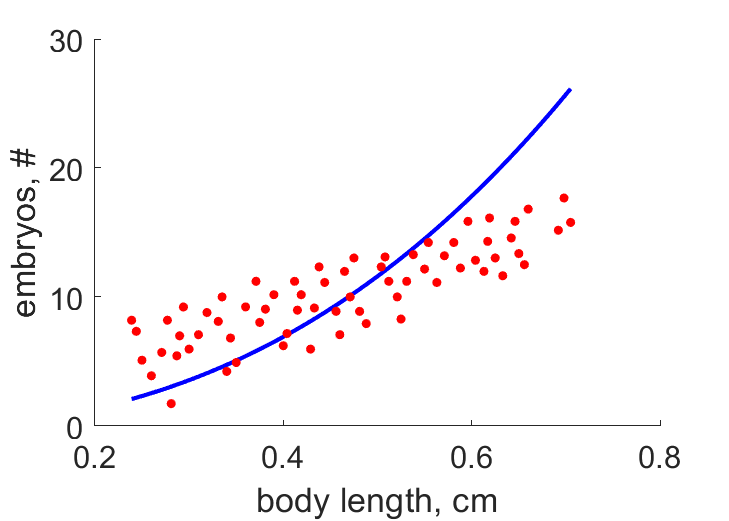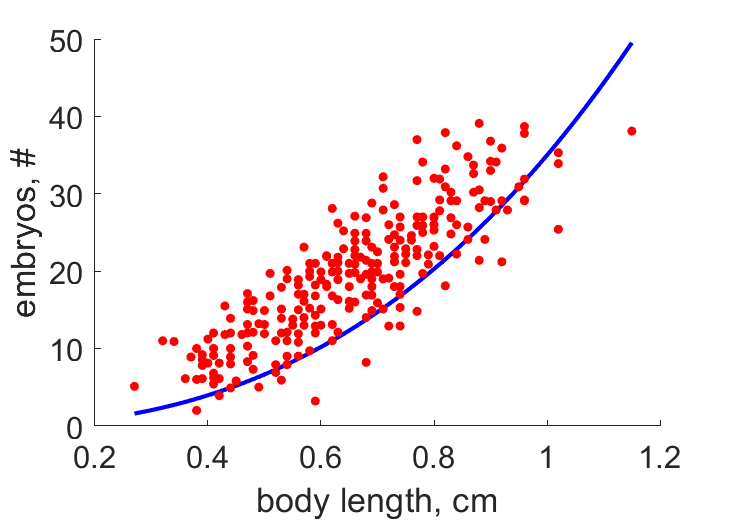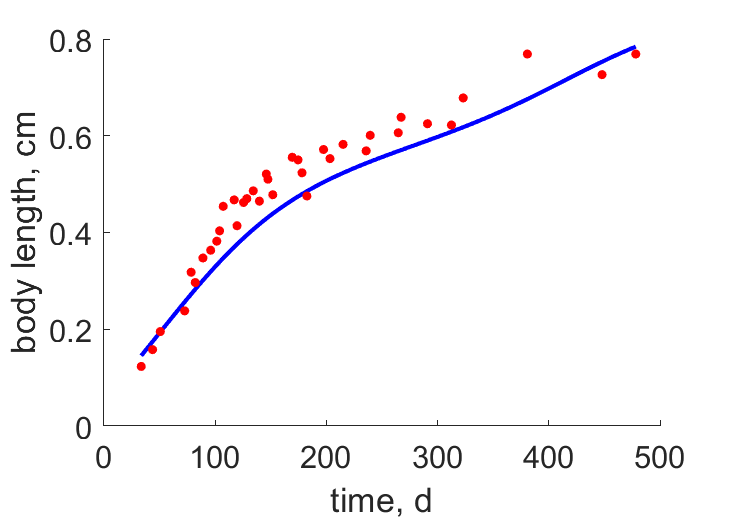Predictions & Data for this entry
| Model: std | climate: MB | migrate: | phylum: |
| COMPLETE = 2.7 | ecozone: MASE | food: biS | class: |
| MRE = 0.130 | habitat: 0iMc | gender: D | order: |
| SMSE = 0.041 | embryo: Ms | reprod: O | family: |
Zero-variate data
| Data | Observed | Predicted | (RE) | Unit | Description | Reference |
|---|---|---|---|---|---|---|
| ab | 40 | 33.07 | (0.1733) | d | age at birth | PetrCard2010 |
| am | 704.4 | 704.5 | (2.447e-05) | d | life span | PetrCard2010 |
| Lb | 0.12 | 0.145 | (0.2083) | cm | total length at birth | PetrCard2010 |
| Lp | 0.24 | 0.2377 | (0.009426) | cm | total length at puberty | PetrCard2010 |
| Li | 1.2 | 1.077 | (0.1025) | cm | ultimate total length | ThomSanc2007 |
| Wdi | 0.079 | 0.08024 | (0.01576) | g | ultimate dry weight | PetrCard2010 |
| Ri | 0.5342 | 0.5761 | (0.07842) | #/d | maximum reprod rate | LozoDefe2006 |
Uni- and bivariate data
| Data | Figure | Independent variable | Dependent variable | (RE) | Reference |
|---|---|---|---|---|---|
| LN_br |  | body length | embryos | (0.3425) | PetrCard2010 |
| LN_ur |  | body length | embryos | (0.319) | LozoDefe2006 |
| tL_br |  | time | body length | (0.1041) | PetrCard2010 |
Pseudo-data at Tref = 20°C
| Data | Generalised animal | Excirolana armata | Unit | Description |
|---|---|---|---|---|
| v | 0.02 | 0.006275 | cm/d | energy conductance |
| kap | 0.8 | 0.609 | - | allocation fraction to soma |
| kap_R | 0.95 | 0.95 | - | reproduction efficiency |
| p_M | 18 | 46.2 | J/d.cm^3 | vol-spec som maint |
| k_J | 0.002 | 0.002 | 1/d | maturity maint rate coefficient |
| kap_G | 0.8 | 0.8024 | - | growth efficiency |
Discussion
- Males are assumed to have the same parameters as females
- Data mostly for Brazil and Uruguay, Uruguay assumed to have a lower food abundance
- tL_br data modeled with a sinusoid temp fluctuation
Facts
- length-AFDW: AFDW in g 10^(-4.074 + 2.458 * log10(length in mm)) (Ref: PetrCard2010)
Bibliography